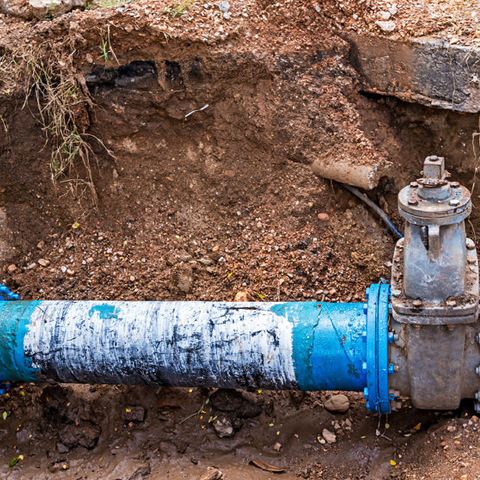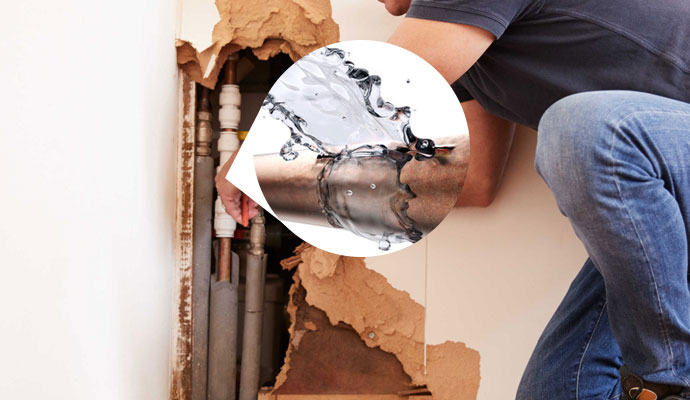From Detection to Correction: A Fast Approach to Handling Burst Pipes
From Detection to Correction: A Fast Approach to Handling Burst Pipes
Blog Article
In this article down the page you can get additional good quality insights with regards to How to Prepare for Your Dishwasher Installation.

A ruptured pipe is a significant emergency; you can just stand as you watch water you pay very much to rejoin with the earth. In worse instances, you notice a swimming pool on your kitchen floor, which is a wonderful trip risk, specifically if you have children around. If the pipeline that burst was in your wall surfaces, bad news: you may need to paint that whole section.
Exactly how can a tragedy like a ruptured pipe be avoided as well as handled? Well, by paying attention to your expert emergency plumbing professionals and complying with these rules.
Exactly how do I recognize when my pipes have burst?
Changing water pressures
Pipes do not simply burst in a day. You might have discovered that your cooking area tap or shower doesn't run immediately when you transform the faucet. It may stop briefly for a couple of seconds and after that blast you with even more pressure than normal.
In various other instances, the water might seem typical in the beginning, after that decrease in pressure after a few secs.
Damp wall surfaces and also water discolorations
Before a pipe bursts, it will certainly leakage, most times. If this consistent leaking goes undetected, the leakage may finish right into a vast gash in your pipe. One simple means to prevent this emergency is to look out for wet walls ad water discolorations. These water stains will lead you right to the leak.
Puddles under pipes as well as sinks
When a pipeline ruptureds, the discharge creates a puddle. It may appear that the puddle is growing in size, as well as regardless of the number of times you mop the puddle, in a few minutes, there's another one waiting to be cleaned. Often, you may not have the ability to map the pool to any type of visible pipes. This is a sign to call an expert plumber.
Untraceable leaking noises
Pipe ruptureds can take place in one of the most unpleasant places, like within concrete, inside walls, or under sinks. When the house goes quiet, you might be able to hear an annoyingly relentless trickling sound. Even after you've checked your shower head and also kitchen area tap, the dripping might proceed.
Precious reader, the dripping might be originating from a pipe inside your walls. There isn't much you can do concerning that, other than tell an expert plumber.
Shut down the Water
When water ices up, it expands in quantity by concerning 9 percent. As well as it increases with incredible force: The pressure inside pipes might go from 40 extra pounds per square inch to 40,000 psi! No pipe can hold that much pressure, so it breaks open. The break might happen where the ice types, but more often, it takes place where water stress finds a weak point in the pipeline. That may be inches or even feet from the icy location. Discover the water shutoff valve and turn off the water to stop even more damage. You could additionally need to shut off the power too, depending upon where the leaks takes place as well as how large it is.
Infected water
Lots of people assume a ruptured pipe is a one-way outlet. Fairly the contrary. As water drains of the hole or gash in your plumbing system, impurities discover their way in.
Your water might be polluted from the source, so if you can, inspect if your water tank has any kind of issues. However, if your alcohol consumption water is supplied and also cleansed by the city government, you must call your plumber instantly if you see or scent anything funny in your water.
What do I do when I spot a ruptured pipe?
Your water meter will certainly continue to run also while your water wastes. To lessen your losses, find the primary controls and also turn the supply off. The water pipe are an above-ground structure beside your home.
How to Fix & Detect a Leaking Pipe
How Do I Know if a Pipe is Leaking?
Leak detection tests can help you determine if your pipe has a leak. Even if you don’t see an apparent leak, you should still conduct leak detection tests regularly to save water and money—and prevent major damage to your home.
Water meter. It can be helpful to figure out what your usual water meter usage numbers are and then monitor them regularly. To monitor your meter, first, turn off all water faucets in your home. Check the meter and write down the numbers. In a few hours, check the meter again. If the numbers have changed, you have a leak. Water gauge. Use a water gauge to test your water pressure. Your showerhead should produce a certain amount of water pressure based on its model and design. If the pressure is lower than it is supposed to be for that specific showerhead, your home likely has a leak. Puddles. Look inside your bathroom, laundry, and kitchen sink cabinets. Puddles around the cabinets or around toilets, tubs, showers, and washing machines indicate the presence of a leaking pipe. You may also notice loose tiles, peeling or flaking paint, or mold caused by water accumulation. Napkin test. Even if you don’t see any puddles, you may still have a leak. You can test for water leaks in the bathroom, laundry, and kitchen by wiping below-sink connections with a napkin, paper towel, or piece of toilet paper. If it becomes damp, you probably have a leaking pipe under the sink. Discolored walls. Walls that are discolored—usually with brown or yellow stains—or bulging might mean that they have been impacted by water damage caused by a leaking pipe. Smell. A leaky pipe will create sitting water, and over time, that water may develop a musty smell. If your home smells musty, but you can’t locate the source, it may be due to a leak. Steps for Fixing a Leaking Pipe
A leaky drain can be remedied by tightening the pipe base, replacing the drain seal, caulking the rim, and tightening the pipe nut. Similarly, a leaking toilet pipe can be treated by tightening the packing nut. You may also need to replace the valve. A leaky faucet may just need tightening or replacement of the washers. If that doesn’t work, consider replacing your faucet. If your pipe has a hole in it, you may want to use a pipe leak sealer or pipe leak tape. This quick fix for water pipe leaks can also temporarily fix a copper pipe leak. https://www.ahs.com/home-matters/quick-tips/how-to-tell-if-pipes-are-leaking/

We are very fascinated by How to Prepare for Your Dishwasher Installation and I am assuming you enjoyed the new entry. Are you aware of somebody else who is excited by the subject? Be sure share it. I thank you for reading our article about How to install a dishwasher safely.
Detail
Report this page